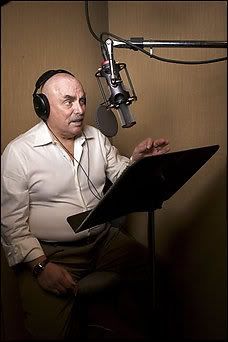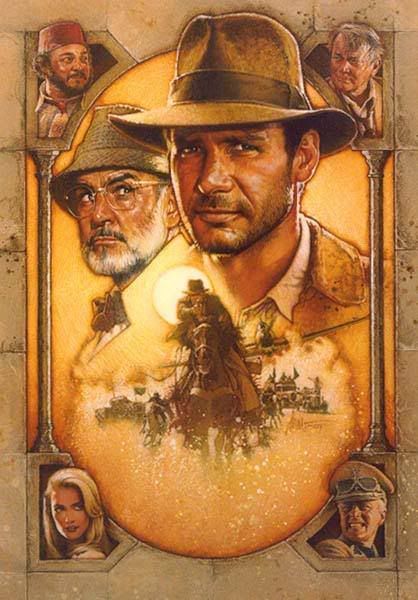The passing of the torch.


Legendary voiceover artist Don LaFontaine, whose gravelly voice could seemingly be heard in every single trailer made in the 80's and 90's, recently passed away of complications from the treatment of an unspecified illness. Though Mr. LaFontaine's career spanned over 40 years of radio, film promotion, television and advertising, he will be remembered as the man who made cheesy-on-paper, sensationalistic catchphrases ("only one man can stop him!") sound not only giddily awesome, but a lot of the time even more iconic than the movies themselves.
So ubiquitous were his narrations of the coming attractions, and so distinctive was his voice, that he became one of the most famous people in show business despite the fact that few people knew his name or face until he spoofed his image a Geico commercial in 2006. To moviegoers, especially young and impressionable ones like I was back then, attracted to the visceral thrill of action movies, horror pictures and thrillers, we did not care to know. LaFontaine sounded like a grizzled, completely bad-assed Old Testament God, "in a world" where Arnold Schwarzenegger and Jean-Claude Van Damme were firearm-toting Samsons and Goliaths. For more on the great Mr. Lafontaine, Ain't It Cool New's Quint wrote a nice obit with many YouTube samples of his work.
Less sad than Mr. Lafontaine's death, but still something that will come as a bummer to genre cinephiles, is the retirement of celebrated poster artist Drew Struzan. Like LaFontaine, the average man on the street did not know his name, but would have had to live under a rock to not have seen his work. They always say never to judge a book by its cover, but when I was a prepubescent kid, I found I could very safely judge a movie by its one-sheet or VHS box - if it was painted by Drew Struzan, it was probably worth my time. Many years ago I saw an exhibition of the man's original paintings at the Norman Rockwell Museum in Stockbridge, MA, where they had many of the works used for posters of Star Wars, The Thing, Back to the Future, Big Trouble in Little China and even Harry and the Hendersons. It really was an awe inspiring experience to be in the presence of pieces of my own personal history.
Trailers, of course, are still very much in effect today. They've got a less ballsy-sounding DonLafontaine soundalike for the action films, a more upbeat and sing-songy Don Lafontaine soundalike for the romantic comedies, and cuddlier-sounding Don Lafontaine soundalike for the children's movies. They're alright and they get the job done, but they're a pretty pale substitute for the real thing. Hand-painted movie posters, on the other hand, are sadly going very quickly the way of the dodo. Typically, a movie poster today is simply a big, bland photograph of the leading actor's head, and the only work Mr. Struzan has done in the past decade has been for films like Hellboy, The Mist, and the first couple of Harry Potter films (as well as the Star Wars prequels and Indiana Jones 4) - movies that hearken back to an old-fashioned, disbelief-suspending style of entertainment.
More than anything, having to bid farewell to these two icons of movie promotion makes me feel old. When I passed the local cineplex as a kid, the sight of a new sci-fi or fantasy film with a Struzan-illustrated poster would immediately fill me with a sense of juvenile, dorky joy. When my friends and I gathered after school with a rented video, whoever went to the kitchen to grab the microwave popcorn and 2-litre bottles of soda would yell at the rest of us not to start the tape yet, for fear of missing a really cool trailer narrated by the kickass-sounding voice dude. The world will have moved on, and these experiences will be as foreign and antiquated to our grandchildren as newsreels and double-billings are to us. The torch is passed, but to whom or what? Those of us who find poetry and magic in popular cinema will have to wait and hope.


0 Comments:
Post a Comment
Subscribe to Post Comments [Atom]
<< Home